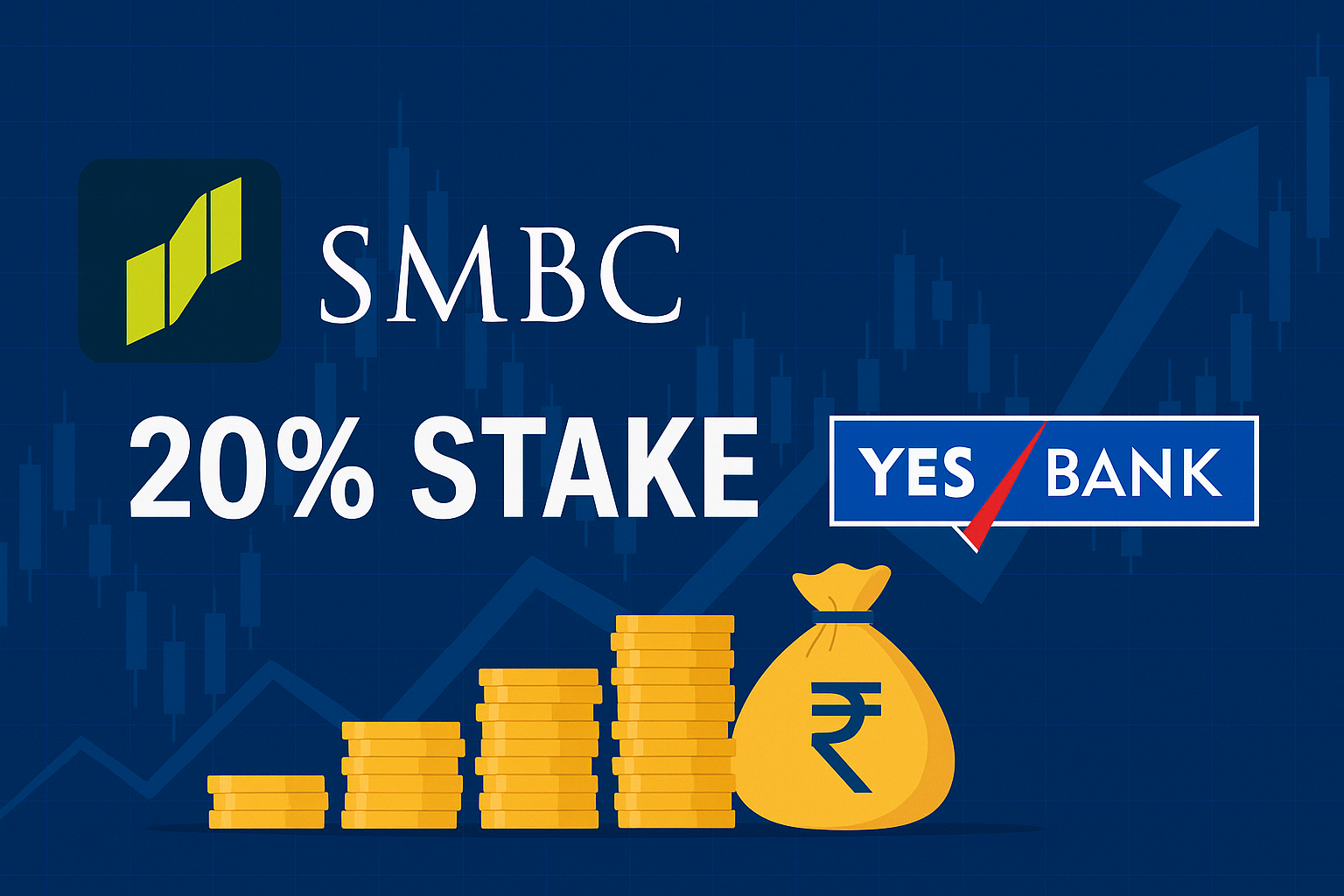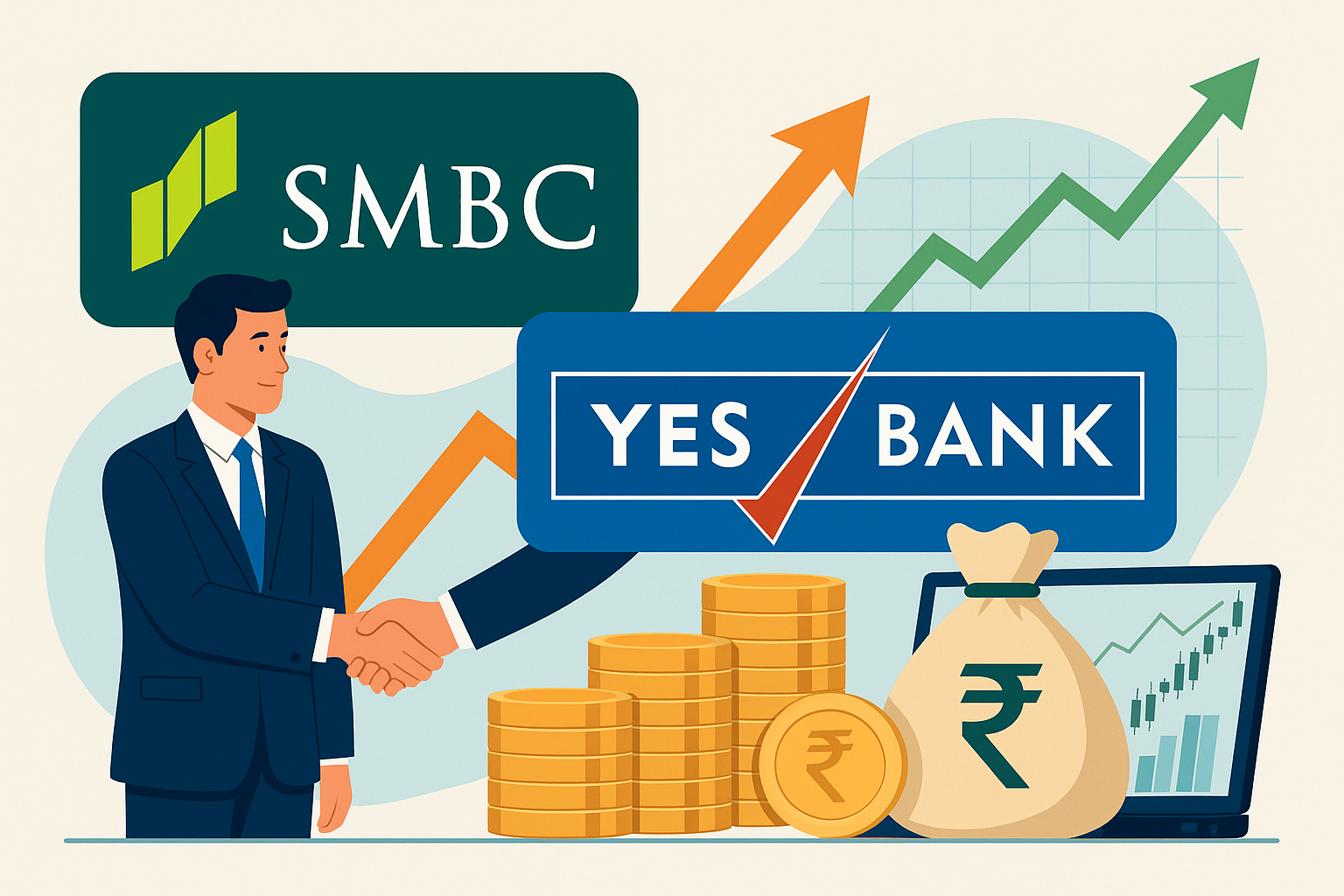On May 9, 2025, Sumitomo Mitsui Banking Corporation (SMBC), Japan’s second-largest bank, announced acquiring a 20% stake in Yes Bank for approximately ₹13,483 crore (around US$1.58 billion). More than just a capital infusion, this transaction signals a new chapter for Yes Bank and reflects growing foreign confidence in India’s banking landscape. In this article, we revisit Yes Bank’s turbulent journey, understand what makes this deal significant, and explore its broader implications.
The Rise of Yes Bank
Established in 2003 by Rana Kapoor and Ashok Kapur, Yes Bank officially began operations in 2004. Initially praised for its dynamic approach and early adoption of digital banking, the bank quickly gained popularity, especially among corporate clients. By the mid-2010s, it was one of the fastest-growing private lenders in India, often seen as a shining example of financial innovation.
The Unraveling: 2017–2020
However, rapid growth came at a cost. Yes Bank’s aggressive lending to high-risk borrowers, many of whom later defaulted, led to a sharp rise in non-performing assets (NPAs). The situation became dire by 2020, prompting intervention by the Reserve Bank of India (RBI):
- A moratorium capped withdrawals at ₹50,000 per account
- The board was dissolved
- Prashant Kumar, a former SBI executive, was appointed administrator
Soon after, a State Bank of India-led rescue plan was rolled out. SBI acquired a 48.2% stake, and other major Indian banks also stepped in to stabilize the bank.
Read more on RBI’s intervention
Path to Recovery: 2020–2025
Post-crisis, Yes Bank focused on rebuilding credibility and fixing its loan book. The bank improved governance, rationalized costs, and regained depositor trust. With leadership stability under Prashant Kumar, it returned to profitability. Over time, SBI gradually reduced its stake—from 48.2% to 24%, and now to 10.81% as part of the SMBC transaction.
Inside the SMBC-Yes Bank Deal
Deal Snapshot:
- Stake Size: 20% in total — 13.19% from SBI and 6.81% from other lenders including ICICI, HDFC, Axis, Kotak Mahindra, Bandhan, IDFC First, and Federal Bank
- Deal Value: ₹13,483 crore (approx. US$1.58 billion)
- Status: SMBC will become the largest single shareholder
- Regulatory Clearance: Awaiting approvals from RBI, Competition Commission of India (CCI), and Yes Bank shareholders

Why SMBC Is Interested
SMBC’s decision is not impulsive—it aligns with its long-term Asia expansion strategy. Here’s why the deal makes sense:
- India’s Potential: With GDP growth projected at over 6%, India offers far better margins and growth opportunities than Japan’s saturated market.
- Branch Network: Yes Bank’s 1,198+ branches offer immediate scale.
- Digital Fit: Yes Bank’s emphasis on fintech complements SMBC’s own tech-forward vision.
- Strategic Base: It provides a strong springboard for SMBC to expand services in retail and SME banking across India.
Finshots offers a helpful breakdown
Regulatory Guardrails
India’s banking regulations are designed to balance openness with control:
- FDI Cap: Foreign direct investment is allowed up to 74% in private banks (automatic route up to 49%)
- Voting Rights: Capped at 10%, extendable to 26% with prior RBI approval
- Approval Triggers: Any holding of 5% or more requires RBI clearance under the ‘fit and proper’ framework

Who Gains—and How
Yes Bank
- Gets a stable, globally respected partner
- Boosts capital adequacy and investor confidence
- Opens doors for better governance and innovation
SMBC
- Makes a meaningful entry into one of the world’s fastest-growing banking markets
- Acquires infrastructure and customer base instantly
- Establishes a platform for future offerings
SBI & Indian Consortium Banks
- SBI’s stake drops to 10.81%, freeing up capital for other ventures
- Other banks involved in the 2020 bailout are selling part of their stakes; specific financial gains remain undisclosed
Retail Shareholders
- Yes Bank’s stock jumped approximately 8.7% post-announcement, closing at ₹21.74 on BSE
- Long-term value will depend on execution quality and synergy realization
Track share price on Moneycontrol
Indian Banking Ecosystem
- Validates India’s regulatory strength and resilience
- May attract more foreign capital into mid-tier banks
- Reinforces the role of RBI as an effective stabilizing force
Lessons from the Past
This isn’t India’s first experience with foreign banking intervention:
- In 2020, DBS India acquired Lakshmi Vilas Bank in a full acquisition
- Banks like HSBC and Standard Chartered operate in India but maintain limited equity participation
SMBC’s investment is unique—it reflects a long-term, strategic commitment rather than a rescue operation.
Yes Bank’s story is a rare corporate turnaround—made possible by regulatory vigilance, domestic cooperation, and now, global capital. SMBC’s investment could help transform the bank into a stronger, more resilient institution. For the broader sector, this partnership sets a positive precedent: when governance meets opportunity, even the most troubled institutions can script new futures.

Disclaimer: This article is intended solely for informational purposes and should not be construed as investment advice.
We have done blogs on Tata Motors Demerger, Vedanta Demerger, Trump Tariffs, India-Pak War Impact, follow us for more such interesting topics and stay updated!


